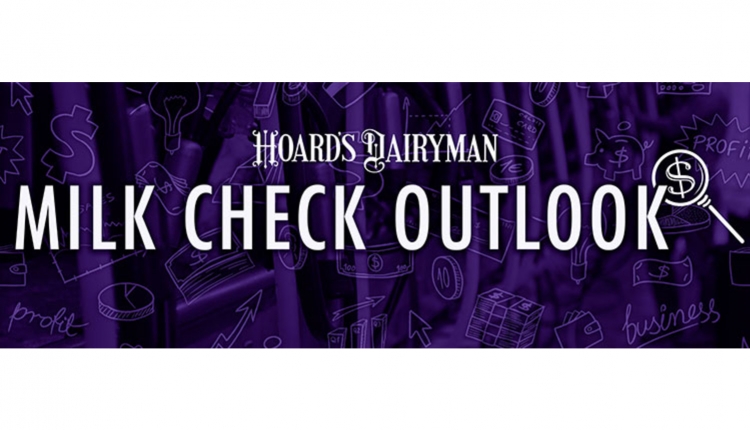The author is the lead economist for dairy with CoBank, a member of the Farm Credit System.

Record farm gate butterfat production, suppressed cream multiples, butter churns running at capacity, and slowed cheese sales in restaurants have been major themes to start out this year. These market circumstances have caused some to ask, “Are U.S. dairy farms producing too much butterfat and outstripping consumer demand?”
It’s a worthy question as butterfat production continues to boom. From a national perspective, milk production, measured in pounds, grew just 15.9% from 2010 to 2024. However, butterfat pounds nearly doubled during that same period, leaping 30.6%.
Cows are quickly changing
In late February, Jonathan Lamb, a New York dairy farmer, and I, were invited to make presentations focused on why milk components matter more than milk production at the 101st USDA Agricultural Outlook Forum. During the discussion, Lamb shared data indicating that his first and second lactation cows completed lactations averaging 5% butterfat. Meanwhile, Lamb’s fifth and greater lactation cows ranged from 3.5% to 4.4% butterfat content with levels falling in each successive lactation.
This is powerful data. Those cows, with 3,367 completed lactations in the past year, are under the same management, and that data indicates how much genetics and genomics have created a seismic shift in butterfat. Plus, there’s another impressive observation — these butterfat percentages are from a Holstein herd and represent levels not seen before in the history of U.S. Holsteins.
Nationally, another dataset documents the growth in sweet cream seeking a home at dairy processing plants. According to Federal Milk Marketing Order data, butterfat percentages climbed from 3.8% to 3.94% from March 2015 to March 2020. However, that shift accelerated from March 2021 to March 2025 as butterfat moved from 4.01% to 4.33% as shown in the graph.
While percentages document the trend, pounds matter to processors. In January 2025, U.S. butterfat production grew 3% compared to the same time last year, February 2025 moved 4% higher and March climbed 2.8% year-over-year. Meanwhile, milk production grew less than 1%. That confirms reports from processors that ample cream supplies exist, and it’s a buyer’s market for those making butter, ice cream, sour cream, heavy creamers, and other full-fat products.
The biggest market signal is per capita butter consumption, which climbed to 6.5 pounds in the latest USDA data set. This represents the highest level since 1965 when the U.S. had 195 million people compared to 345 million this year. Now, there are 150 million more people consuming butter, which is a major multiplier.
Butter, the product, now absorbs 18% of the U.S. milk supply on a milkfat basis — up from 16% in 2000. Meanwhile, cheese consumption has climbed to a new record. It, too, requires more butterfat and has moved from 38% to 42% of the U.S. milkfat supply.
As one would expect, butter production has powered to a new record at 2.2 billion pounds in 2024. Even at that lofty number, the U.S., as it turns out, cannot produce enough butter. This is a significant reason the U.S. has opportunity to grow its butterfat production.
In 2011, the U.S. imported 10 million pounds of butterfat, anhydrous milkfat, and butter oil, according to USDA’s Economic Research Service. By 2015, that import figure climbed to 52 million pounds, and nearly doubled to 100 million pounds in 2021. Last year the U.S. imported a whopping 172 million pounds. Yes, the U.S. is importing nearly 8% of its milkfat needs if one compares the 172-million-pound import figure to the 2.2 billion pounds produced domestically last year.
Export markets present another opportunity. While the U.S. exports roughly 16% to 17% of its milk production as dairy products and ingredients, there is a dichotomy in the data. On a full-fat basis, the U.S. exported just 5.2% of its milk production last year, while it exported 21.6% of its milk production on a skim solids basis. This indicates that the U.S. skims off its butterfat for the domestic market, keeping it a small player in global butterfat trade.
Lower global prices
While tariffs and trade have been making all the headlines, a new development has occurred in dairy markets. U.S. butter is trading $1 per pound lower than the two other major exporters — the EU and New Zealand. As that has taken place, U.S. butter exports doubled in February and anhydrous milkfat grew tenfold as shown in the graph on page 237.
One more reason for optimism involves recent traction on whole milk. In April, the Senate Ag Committee overwhelmingly endorsed a plan to return whole milk back to school meal programs. Earlier this year, the House Ag Committee approved a similar measure. Should this measure become law, more butterfat could move through fluid milk channels as children ages 2 to 11 drink twice the amount of milk than adults. What’s more, 35% of that milk for young children is consumed at school, according to USDA data.
Long term, there are more reasons to be bullish, rather than bearish, on butterfat. To be fair, manufacturing, marketing, and distribution channels need to continue to adapt to the fast-paced change taking place in the U.S. milk supply and consumer demand.




